
Star Raiders is a space combat simulator video game written by Doug Neubauer and published by Atari, Inc. in 1980 for the Atari 400/800 computers. The player assumes the role of a starship pilot fighting Zylon forces while managing their ship's energy and systems and protecting friendly starbases. Starflight and combat are from 3D cockpit view with a 2D galactic map showing the status of the overall invasion. Neubauer was influenced by Battlestar Galactica and Star Wars as well as the 1971 mainframe game Star Trek and began developing the game during downtime at Atari. Matt Barton and Bill Loguidice of Gamasutra called the Star Raiders one of the best-known games for Atari's 400 and 800 computers.
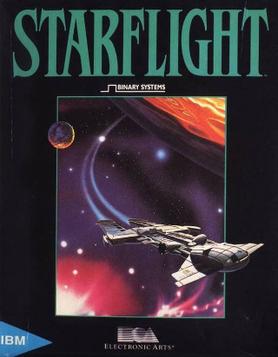
Starflight is a space exploration, combat, and trading role-playing video game created by Binary Systems and published by Electronic Arts in 1986. Originally developed for IBM PC compatibles, it was later ported to the Amiga, Atari ST, Macintosh, and Commodore 64. A fully revamped version of the game was released for the Sega Genesis in 1991.

Starflight 2: Trade Routes of the Cloud Nebula is a 1989 science fiction video game developed by Binary Systems and published by Electronic Arts as the sequel to the successful Starflight. It features a combination of space exploration, role-playing and strategy within a futuristic setting. The player commands a spaceship capable of traveling to the game world's 150 solar systems, communicating with or attacking other spaceships, and landing on planetary surfaces which may be explored with a crewed rover for plot clues, minerals and alien lifeforms. Game mechanics and the overall look and feel closely resemble the earlier Starflight game, but many new features are introduced including an interstellar trade-based economy, new sentient alien races, and new spacecraft accessories and artifacts. The player is tasked with discovering the ultimate source of the advanced spacecraft technology and unlimited fuel supply which provide a military advantage to the Spemin, a hostile alien race threatening to annihilate or enslave humanity. A major part of the game consists of earning enough money to pay for spaceship upgrades and crew training by engaging in interstellar trade and barter with various alien cultures at their planetary trading posts.

Might and Magic Book One: The Secret of the Inner Sanctum is an early role-playing video game, first in the popular and influential Might and Magic franchise. It was released in 1986 as New World Computing's debut, ported to numerous platforms and re-released continuously through the early 1990s.
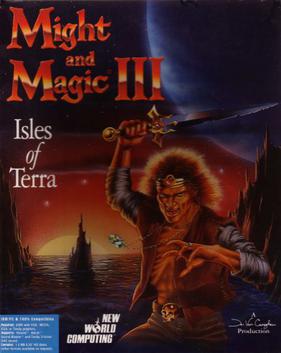
Might and Magic III: Isles of Terra is the third game in the role-playing video game series Might and Magic. Released in 1991, it is the predecessor to Might and Magic IV: Clouds of Xeen and the sequel to Might and Magic II: Gates to Another World. A Sega Genesis version was developed, but never released.
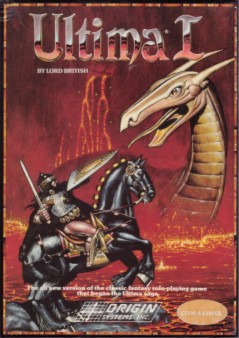
Ultima, later known as Ultima I: The First Age of Darkness or simply Ultima I, is the first game in the Ultima series of role-playing video games created by Richard Garriott, originally released for the Apple II. It was first published in the United States by California Pacific Computer Company, which registered a copyright for the game on September 2, 1980 and officially released it in June 1981. Since its release, the game has been completely re-coded and ported to many different platforms. The 1986 re-code of Ultima is the most commonly known and available version of the game.
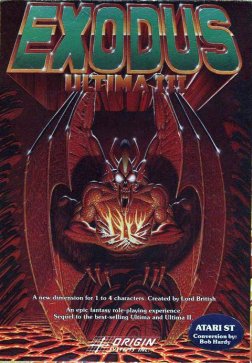
Ultima III: Exodus is the third game in the series of Ultima role-playing video games. Exodus is also the name of the game's principal antagonist. It is the final installment in the "Age of Darkness" trilogy. Released in 1983, it was the first Ultima game published by Origin Systems. Originally developed for the Apple II, Exodus was eventually ported to 13 other platforms, including a NES/Famicom remake.

Albion is a single player role-playing video game developed and published by Blue Byte for MS-DOS in 1995. It was originally released in German, then translated to English for international release. The game uses a science fiction setting that incorporates traditional fantasy elements, such as magic.

Odyssey: The Compleat Apventure was a video game written by Robert Clardy and released by Synergistic Software in 1980. It was created for the Apple II platform and is considered one of the first microcomputer-based role-playing video games. The title was intentionally misspelled; Apventure is a reference to the Apple computer while "Compleat" is simply an Archaic spelling of the word "complete" meant to match the feel and setting of the game.

Buck Rogers: Countdown to Doomsday is a role-playing video game set in the Buck Rogers XXVC universe. It was published in 1990 by Strategic Simulations for MS-DOS, Commodore 64, and Amiga. A Sega Genesis version was released in 1991. Matrix Cubed is the 1992 sequel.

Hard Nova is a role-playing video game developed by Malibu Interactive and published by Electronic Arts in 1990 for DOS, Amiga and Atari ST. It is a follow-up to Sentinel Worlds I: Future Magic.

Champions of Krynn is role-playing video game, the first in a three-part series of Dragonlance Advanced Dungeons & Dragons "Gold Box" games. The game was released in 1990. The highest graphics setting supported in the DOS version was EGA graphics. It also supported the Adlib sound card and either a mouse or joystick.
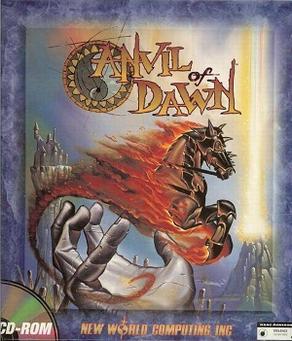
Anvil of Dawn is a 1995 fantasy role-playing video game developed by DreamForge Intertainment and published by New World Computing. Anvil of Dawn was named the best role-playing game of 1995 by Computer Gaming World and Computer Game Review.

Nomad is a 1993 space trading and combat game developed by Intense! Interactive and Papyrus Design Group. It was published by GameTek for MS-DOS.

Telengard is a 1982 role-playing dungeon crawler video game developed by Daniel Lawrence and published by Avalon Hill. The player explores a dungeon, fights monsters with magic, and avoids traps in real-time without any set mission other than surviving. Lawrence first wrote the game as DND, a 1976 version of Dungeons & Dragons for the DECsystem-10 mainframe computer. He continued to develop DND at Purdue University as a hobby, rewrote the game for the Commodore PET 2001 after 1978, and ported it to Apple II+, TRS-80, and Atari 800 platforms before Avalon Hill found the game at a convention and licensed it for distribution. Its Commodore 64 release was the most popular. Reviewers noted Telengard's similarity to Dungeons and Dragons. RPG historian Shannon Appelcline noted the game as one of the first professionally produced computer role-playing games, and Gamasutra's Barton considered Telengard consequential in what he deemed "The Silver Age" of computer role-playing games preceding the golden age of the late 1980s. Some of the game's dungeon features, such as altars, fountains, teleportation cubes, and thrones, were adopted by later games such as Tunnels of Doom (1982).

Protostar: War on the Frontier is a 1993 science fiction video game produced by Tsunami Media that blends elements of role-playing, space exploration, space combat, and strategy. The player commands a spaceship from a first-person perspective in real-time capable of traveling to the various planets in the game world and launching an explorer vessel to traverse their surfaces. Several sentient alien races inhabit the region with whom the player interacts through friendly conversation, intense spaceship combat, or barter at their planetary trading posts. One of these races, the Skeetch, is aggressively threatening to conquer the Earth; the player has been recruited to convince the other sentient races in the region to join humanity in an alliance against the Skeetch. A secondary goal of the game is to earn money by performing actions such as selling alien lifeforms and minerals collected on planetary surfaces to obtain the funds needed to upgrade the player's spaceship and improve the odds of survival in confrontations with the Skeetch and other hostile entities. Computer Gaming World criticized the game for failing to break new ground and for its "muddled" blend of science fiction themes, but did recommend it to players new to this genre.
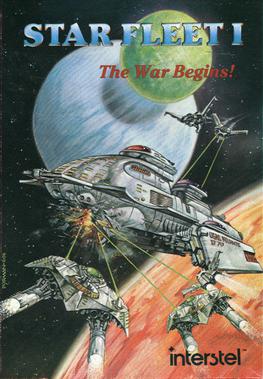
Starfleet I: The War Begins is a 1984 strategy computer game designed by Trevor Sorensen and developed by Interstel. It was released for Apple II, DOS and Commodore 64. Versions for the Commodore 128, Atari ST and Atari 8-bit family were released in 1986 and versions for the Amiga and Macintosh were released in 1987. The game was successful enough to spawn sequels which are collectively known as the Star Fleet series.

Elvira: Mistress of the Dark is a horror adventure/role-playing video game developed by Horror Soft and released by Accolade in 1990 for the Amiga, Atari ST, Commodore 64 and MS-DOS computers. It was Horror Soft's second published game after 1989's Personal Nightmare and stars the actress Cassandra Peterson as her character Elvira.

Star Command is a video game released by Strategic Simulations in 1988.



















